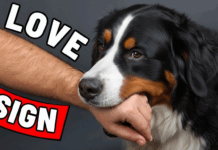Last Updated on June 6, 2023 by Dogs Vets
Understanding Dog Behavior: The Science Behind Canine Communication and Body Language
Dog behavior is an intricate and fascinating subject that pet owners and animal lovers alike have been trying to decipher for centuries.
By understanding the science behind canine communication and body language, we can better appreciate our furry friends and foster a stronger bond with them.
In this comprehensive guide, we will explore the various ways dogs communicate and the importance of understanding their body language to ensure a happy, healthy relationship between you and your beloved pet.
The Importance of Understanding Dog Behavior
Understanding your dog’s behavior is crucial for building a strong, trusting relationship with your pet.
By recognizing and interpreting their signals, you can better meet their needs, prevent potential behavioral problems, and ultimately, keep them safe and happy.
Furthermore, it helps you establish boundaries, communicate effectively, and train your dog more efficiently.
Canine Communication: Vocalizations
Dogs use a range of vocalizations to communicate their emotions, intentions, and needs. Here are some common dog vocalizations and what they might mean:
- Barking: Barking can indicate excitement, fear, frustration, or aggression. The context and tone of the bark can help you determine the cause.
- Growling: Growling can be a warning sign of aggression, fear, or discomfort. It is essential to pay attention to the context and your dog’s body language when they growl.
- Whining: Whining often indicates stress, anxiety, or a need for attention.
- Howling: Howling can be a sign of loneliness, a call for attention, or a way for your dog to communicate with other dogs in the distance.
Canine Communication: Body Language
Body language is a significant part of a dog’s communication repertoire. Dogs use their entire body to convey messages to humans and other animals.
Here are some key aspects of canine body language:
Understanding a Dog’s Eyes
A dog’s eyes can convey a wealth of information about their emotional state:
- Soft, relaxed gaze: Indicates contentment and comfort.
- Wide, staring eyes: Suggests fear, anxiety, or aggression.
- Averting eye contact: A sign of submission or respect for a more dominant individual.
- Direct eye contact: Can be a challenge or a sign of confidence.
The Significance of a Dog’s Ears
A dog’s ears play a critical role in conveying their emotions and intentions:
- Ears forward: Indicates curiosity or interest in something.
- Ears back: Can suggest fear, submission, o relaxation.
- Ears flattened: Indicates stress or fear.
The Role of a Dog’s Tail
A dog’s tail can reveal a lot about their emotional state:
- Tail wagging: Generally associated with excitement, happiness, or a friendly greeting, but can also indicate stress or insecurity depending on the speed and stiffness of the wag.
- Tail held high: A sign of confidence or arousal.
- Tail tucked: Indicates fear or submission.
Canine Postures: Dominant and Submissive Signals
Dogs communicate their social status and intentions through various postures:
- Dominant postures: A dog displaying dominance may stand tall, with their tail held high, ears forward, and direct eye contact.
- Submissive postures: A submissive dog may lower their body, tuck their tail, flatten their ears, and avoid direct eye contact.
Dog Scent Communication
Dogs have an incredible sense of smell and use scent as a primary means of communication. They can gather information about other dogs or their environment through sniffing and marking behaviors.
Scent marking is a way for dogs to establish territory, communicate their presence, and share information about their reproductive status.
How to Read Your Dog’s Body Language
To accurately interpret your dog’s body language, it is essential to consider the context and observe the entirety of their body.
Here are some tips for reading your dog’s body language:
- Pay attention to the situation and environment.
- Observe your dog’s eyes, ears, tail, and body posture.
- Look for combinations of signals that help paint a clearer picture of their emotional state.
- Consider your dog’s individual personality and breed characteristics.
The Science Behind Dog Behavior and Training
Understanding the science behind dog behavior is crucial for effective training.
Positive reinforcement training methods, such as rewarding desired behaviors with treats, praise, or play, are proven to be more effective and lead to stronger bonds between dogs and their owners.
It is also essential to be patient, consistent, and understanding of your dog’s unique needs and limitations during the training process.
Conclusion
Understanding dog behavior and the science behind canine communication and body language is essential for fostering a strong, healthy relationship with your pet.
By observing and interpreting their signals, you can better meet their needs, prevent potential behavioral problems, and ensure their safety and happiness.
Moreover, a solid understanding of dog behavior will enable you to train your pet more effectively, using positive reinforcement methods that strengthen the bond between you and your furry friend.
Frequently Asked Questions (FAQs)
Q1: Can all dogs understand the same body language signals from other dogs?
A1: While there are universal dog body language signals, individual dogs may have their own unique ways of expressing themselves. Socialization and breed-specific characteristics can also influence how dogs interpret and display body language signals.
Q2: Why does my dog tilt their head when I speak to them?
A2: Dogs may tilt their heads to better hear or locate a sound, or to see our facial expressions more clearly. It could also be a learned behavior, as dogs may have realized that head tilting elicits positive reactions from their owners.
Q3: What does it mean when my dog yawns?
A3: Yawning in dogs can have several meanings. While it could indicate tiredness, it can also be a calming signal to diffuse tension or stress in a situation.
Q4: How can I tell if my dog is happy?
A4: A happy dog typically has a relaxed body posture, a soft gaze, and may wag their tail. They may also show interest in engaging with their environment or seek interaction with their owner.
Q5: How can I tell if my dog is stressed or anxious?
A5: Signs of stress or anxiety in dogs may include pacing, panting, trembling, whining, excessive licking or grooming, and changes in appetite or sleeping patterns.
Additionally, dogs may exhibit subtle stress signals such as yawning, lip licking, or averting eye contact.
Q6: How can I help my dog feel more comfortable in new or unfamiliar situations?
A6: Gradual exposure and positive reinforcement can help your dog feel more at ease in new situations.
Provide treats, praise, or play to create positive associations with the unfamiliar environment. It’s also crucial to respect your dog’s boundaries and not force them into situations that make them uncomfortable.
Q7: Can I train my dog to understand and respond to my body language?
A7: Yes, dogs are highly perceptive and can learn to recognize and respond to your body language cues. Consistent training, patience, and positive reinforcement can help your dog understand your signals and react accordingly.
Fact Check
We hope you enjoyed reading this article. What are your thoughts on the topic?
“At [Dogsvets.com], our goal is to bring you the most accurate and up-to-date information on all things pet-related.
If you have any additional insights or would like to advertise with us, don’t hesitate to get in touch.
If you notice any errors or discrepancies in our content, please let us know so we can correct them.
We welcome your feedback and encourage you to share this article with others.”

















